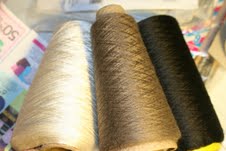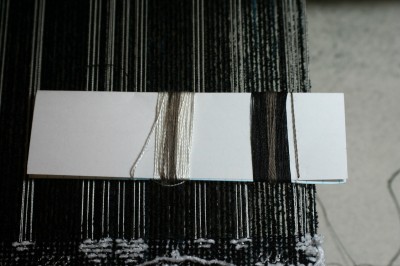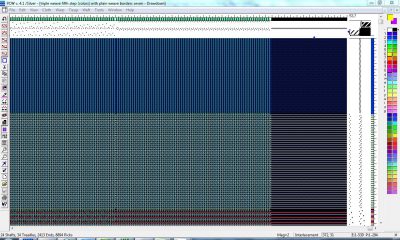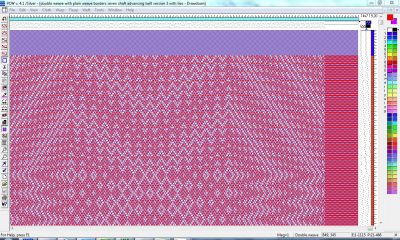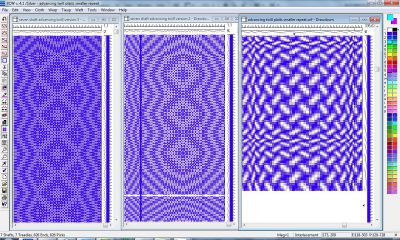I’m hot into fabric design, playing with painted warp simulations in Photoshop. Unfortunately, the simulations are pretty crude, and I don’t think they will be true-to-life with the real thing. I will have to dye and weave up samples to see whether it actually works, which of course burns precious time. But I think it’s necessary.
Here are a few of the ideas I’ve been playing with:
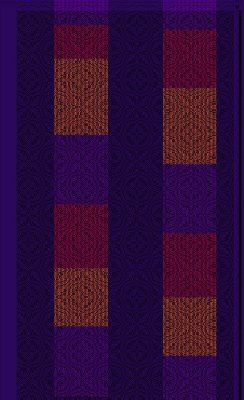
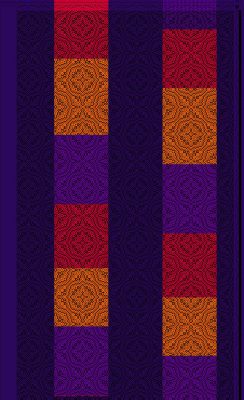
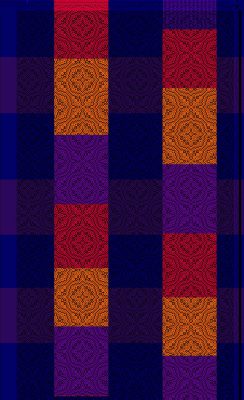
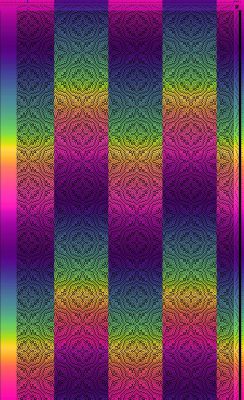
I am not satisfied with any of these yet and will play more with colors and pattern until I arrive at something I like enough to test.
Meanwhile, here is the qiviut-scarf pattern on the loom:
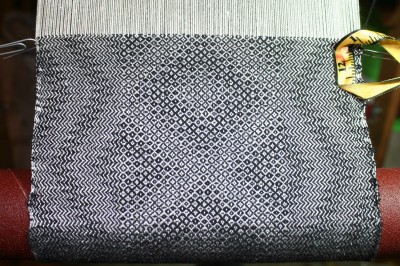
This is being woven up in black cashmere the same size as the qiviut, to “test out” the pattern before I weave with the REALLY expensive stuff! So far I have woven a bit over half the scarf, and I expect to finish it today. It will probably take me two more days to weave up the qiviut version, which means I can get started on the samples for the Handwoven garment challenge over the weekend.
Which, of course, also means that I’d better get cracking on design! So back to work I go.
